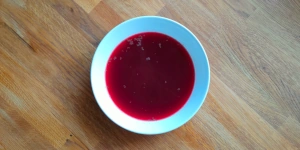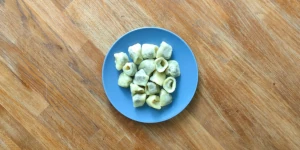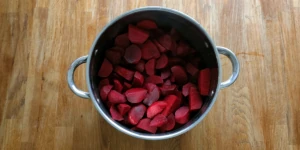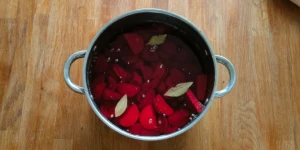
Polish Borscht, beetroot soup with dumplings - Barszcz czerwony z uszkami
Jump to recipe
Borscht is popular in both Central and Eastern European countries. Under the name "borscht", yet, there are various sour soups prepared based on rye sourdough, sauerkraut or beetroot. The latter version is known as red borscht or just borscht.
A popular variation of this soup is the Polish version called "barszcz z uszkami", which means "Borscht with dumplings" in English. It is important to note that this recipe is a vegetarian option. It is cultivated during the celebration of Advent until Christmas in many Polish homes. This small part of Christmas Eve dishes is served as the first course. Tempting everyone's palate and filling the air with festive joy. Its unique flavor combines spicy, earthy and sweet elements. Enhanced with the rich depth of wild mushrooms. It provides an unparalleled dining experience unlike any I've experienced before.
How did "borscht" was created?
The first mention of borscht appears at the turn of the Middle Ages and the Renaissance. However, the current version is different from its predecessor. Initially, the dish known as borscht was cooked based on borscht (Heracleum sphondylium). Its cut stems and leaves quickly fermented in water. As a result, a sour drink was obtained, which was boiled into a soup called borscht.
From the mid-17th century, wheat bran or rye flour was increasingly used instead of cooking borscht from borscht. Thus, the valued sour taste was also obtained, and the Old Polish menu was enriched with a new dish - with time called white borscht or sour rye soup.
A little later, they also began experimenting with the use of beetroot as one of the ingredients of borscht. So they started fermenting. Based on beetroot sourdough, red borscht was created. It is commonly enjoyed with "uszka" and beef marrow. It can also be served with sausage, groats, or mushrooms for additional flavor profiles. Over time, it has become a versatile soup for any occasion.
As already mentioned, borscht is very popular as a Christmas Eve dish. But, in many regions of Poland (e.g. in Silesia), borscht never became the king of the Christmas table.

Uszka is a kind of tiny dumplings with stuffing inside. They look like Italian tortellini. Yet, Polish "uszka" (translated as "ears") are much softer than them. Their filling can be both meat and mushroom. In the post version, the latter is used.
Recipe informations:
Borscht
- 40 g of dried mushrooms
- 1 onion
- 2 cloves of garlic
- 3 bay leaves
- 4 allspice
- 10 peppercorns
- 2 kg of red beets
- 1/2 celery root
- 3 tablespoons of spirit vinegar 10%
- sea salt (about 1/2 tbsp)
- freshly ground black pepper (about 1 teaspoon)
Uszka
- 1 cup of flour
- 1 egg
- 3 grams of dried mushrooms
- 2 tablespoons of olive oil
- 1 onion
- about 50 ml of water
Borscht
1. Step
2. Step
3. Step
4. Step
5. Step

6. Step

